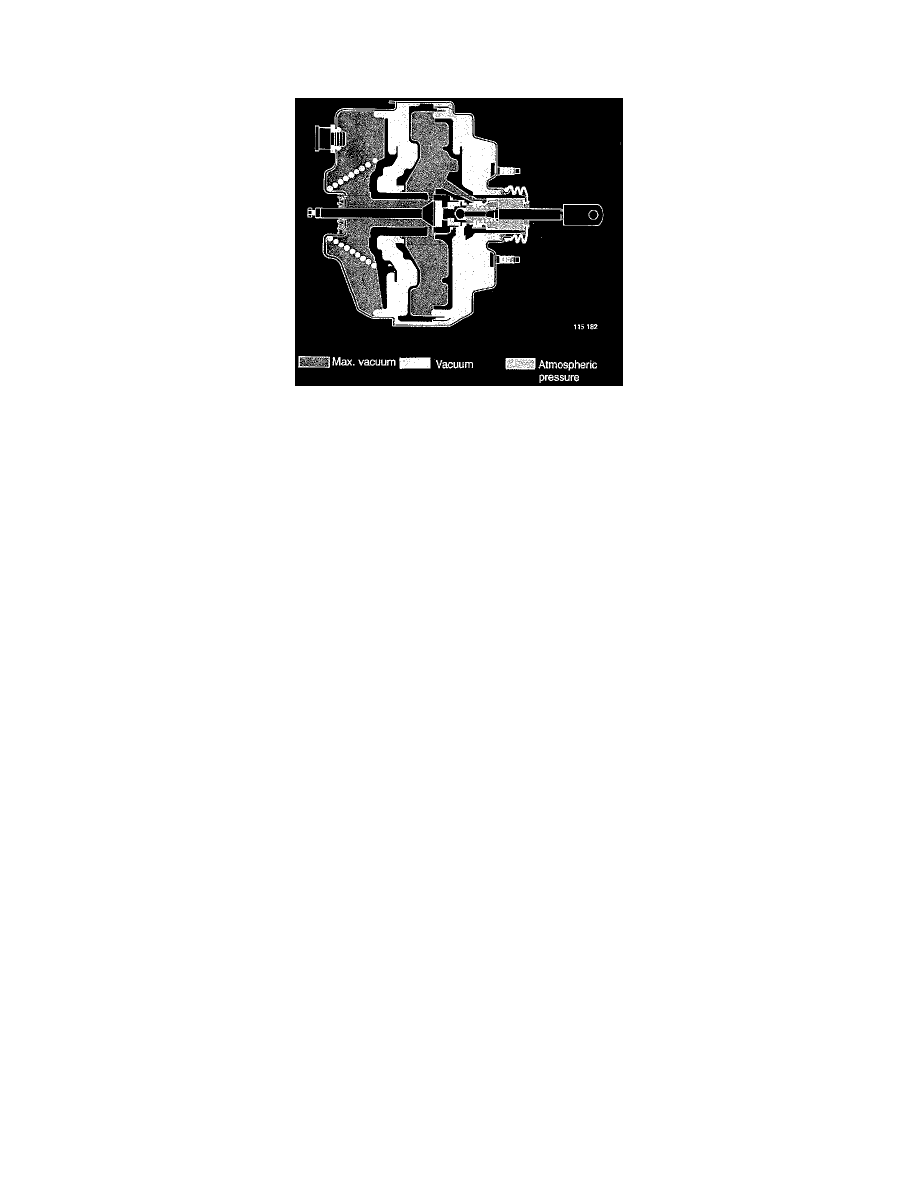940 L4-2.3L SOHC VIN 88 B230F (1992)

Vacuum Brake Booster: Description and Operation
Partial Braking
The pedal force is less than under full braking conditions. Initially, the action is the same as in full braking. As the brakes are applied, the hydraulic
pressure in the master cylinder and the opposing force on the front pushrod increase. The control housing force is transmitted to the pushrod by the outer
section of the reaction disc. Since the disc is made of rubber, the outer section is compressed while the centre expands, as illustrated, displacing the
control housing further forward than the valve piston. As a result, the piston seat reaches the valve and interrupts the air supply. The pressure behind the
diaphragm remains constant and is insufficient to overcome the opposing hydraulic pressure in the master cylinder. Thus, the moving parts of the servo
remain in the same position and constant braking is achieved as long as the same pedal pressure is maintained. If the pedal pressure is increased, the
force exerted by the valve piston on the centre of the reaction disc becomes greater, causing a certain forward displacement of the piston. The piston seat
then leaves the valve, enabling more air to enter and increasing the braking effort until a new equilibrium position is established. if the pedal force is
reduced, the center of the reaction disc is forced away from the seat in the control housing, and the two sides of the diaphragm are once more
interconnected.The pressures are now equalized and the control housing moves backward under the action of the spring, reducing both the opposing
force on the front pushrod and the braking effort. Since the degree of compression of the reaction disc is also reduced, the valve piston returns to the
position illustrated and a new equilibrium position is achieved.
